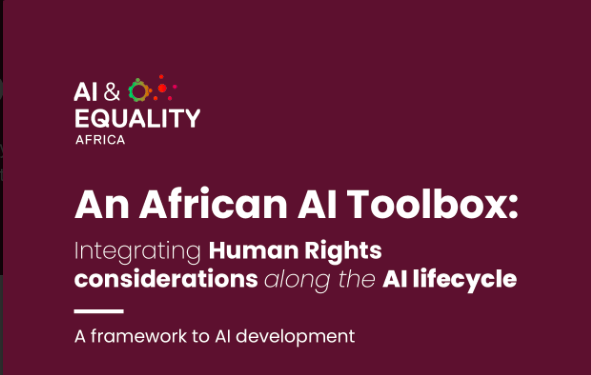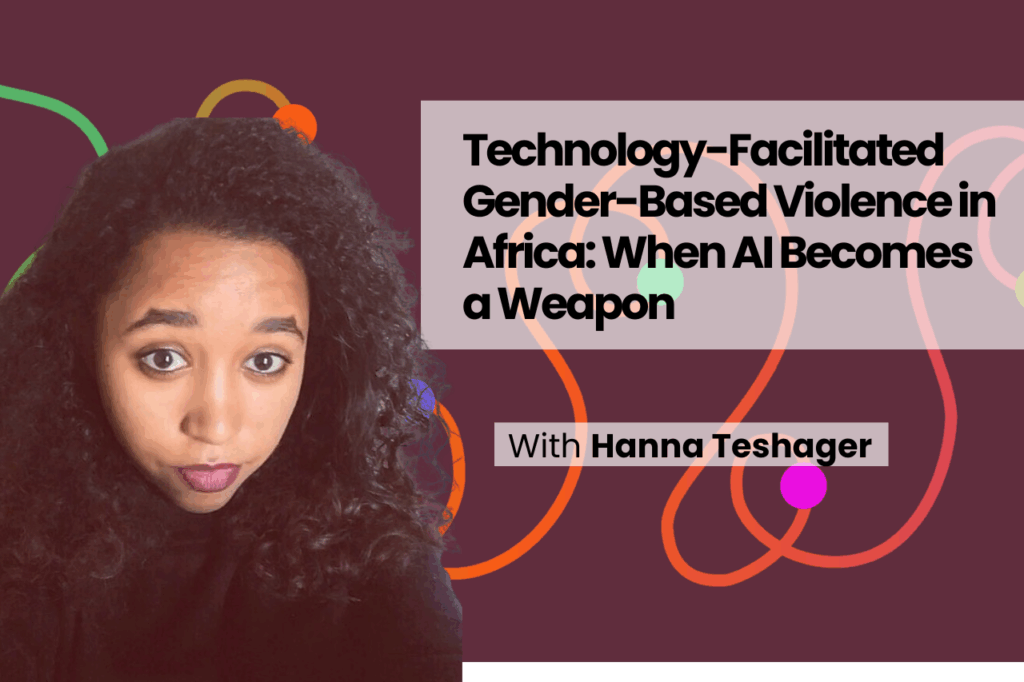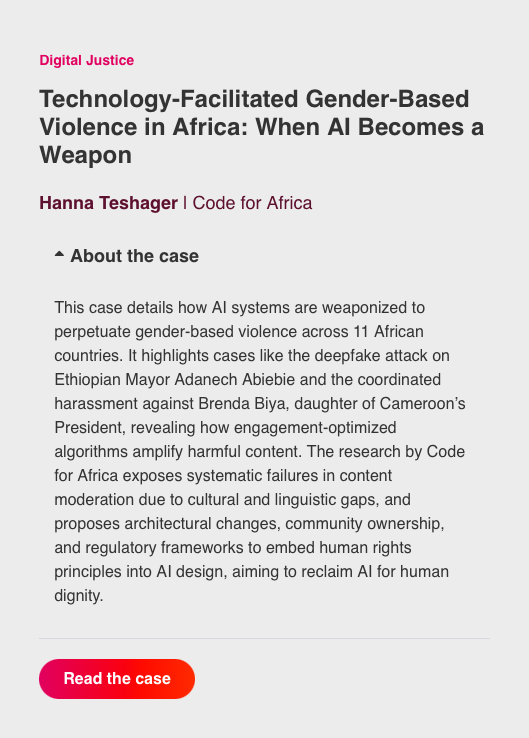

In January 2025, Ethiopian Mayor Adanech Abiebie woke to find deepfake videos showing her in fabricated intimate situations with political leaders spreading across social media. Within hours, these AI-generated lies had reached over 562,000 viewers, with 90% believing the false narrative that her political success stemmed from sexual relationships rather than competence.
Meanwhile, in Cameroon, President Paul Biya’s daughter Brenda faced a coordinated harassment campaign after publicly disclosing her sexual orientation. Ninety-two Facebook posts using identical templates reached 8.9 million people, designed to mock her identity and appearance. These cases represent a sophisticated, continent-wide crisis of Technology-Facilitated Gender-Based Violence (tfGBV) documented by Code for Africa across eleven African countries—weaponizing AI systems and exploiting algorithmic amplification to silence women and LGBTQ+ individuals.
When Algorithms Amplify Hatred
The most chilling aspect isn’t just the technology used to create these attacks—it’s how platforms’ own AI systems become unwitting accomplices. Research reveals that AI recommendation systems consistently amplify tfGBV content because emotional provocation generates high engagement that algorithms interpret as user satisfaction.
In Mayor Abiebie’s case, TikTok’s algorithm treated emotional responses to the deepfake video as signals to promote the content further. Users commenting with laughing emojis and sharing the fabricated material sent positive signals to the recommendation system. The AI interpreted coordinated harassment as user interest, promoting content to broader audiences.
This creates a vicious feedback loop where harmful content becomes self-amplifying. Analysis shows controversial content targeting women and LGBTQ+ individuals achieves 15-20% higher engagement rates than baseline content, leading to exponential reach multiplication without financial investment.
Industrial-Scale Digital Violence
Today’s tfGBV attacks represent sophisticated operations exploiting specific AI vulnerabilities:
- Template-Based Coordination: In Brenda Biya’s case, 34 Facebook posts used identical copy-paste techniques, collectively achieving 8.05 million views while evading platform detection—despite being textbook coordinated inauthentic behavior.
- Cultural Precision: Attackers leverage existing social biases, transforming cutting-edge technology into weapons for ancient prejudices. The deepfakes targeting Mayor Abiebie tapped into deeply rooted assumptions about women in leadership.
- Evasion Technologies: Perpetrators systematically circumvent content moderation through “spamouflage” techniques (replacing letters with symbols), exploitation of cultural gaps in AI training data, and strategic timing for maximum algorithmic visibility.
- Cross-Platform Warfare: Campaigns span multiple platforms with sophisticated coordination. Between September 2024 and March 2025, approximately 50 TikTok videos continued Brenda Biya’s harassment across different social media trends.
The Failures of Content Moderation
Current systems fail on multiple fronts:
- Cultural Blindness: Content moderation trained on Western datasets misses African cultural contexts. Local slurs like “woubi” and “lélé”—French terms targeting LGBTQ+ individuals—consistently pass through automated systems.
- Speed Problem: Code for Africa found 80% of tfGBV engagement occurs within 48 hours, creating narrow intervention windows. Current moderation systems respond too slowly, making them reactive rather than protective.
- Coordination Detection Gaps: Platforms fail to identify obvious coordination patterns, as demonstrated by 34 identical posts evading detection despite clear synchronized timing and template sharing.
A Human Rights Crisis by Design
The violations documented in tfGBV campaigns begin with fundamental AI design decisions. Current platforms optimize for engagement metrics rather than community safety, creating structural vulnerabilities that make attacks profitable for platforms and effective for perpetrators. Development teams lack representation from affected communities and human rights specialists. Success metrics focus on user growth and engagement without systematic evaluation of impacts on vulnerable communities. Testing protocols fail to include harassment scenarios or community-defined harm assessment.
Rebuilding AI for Human Dignity
The research provides a roadmap for technical interventions:
- Engagement Quality Assessment: Platforms must distinguish between positive engagement (learning, community building) and negative engagement (harassment, coordinated attacks) rather than optimizing purely for interaction quantity.
- Real-Time Coordination Detection: Network analysis capabilities that identify template sharing, synchronized timing, and cross-platform coordination before viral amplification occurs.
- Cultural Context Integration: Systematic inclusion of African languages, cultural references, and local knowledge through participatory dataset development and community expert integration.
- Community Governance: Moving beyond tokenistic consultation to include affected communities in technical architecture decisions, policy development, and evaluation criteria with transparent algorithmic decision-making.
The transnational nature of tfGBV requires coordinated responses: legal frameworks addressing AI-enabled coordination, platform accountability standards for harassment prevention, and international cooperation mechanisms for cross-border campaigns.

